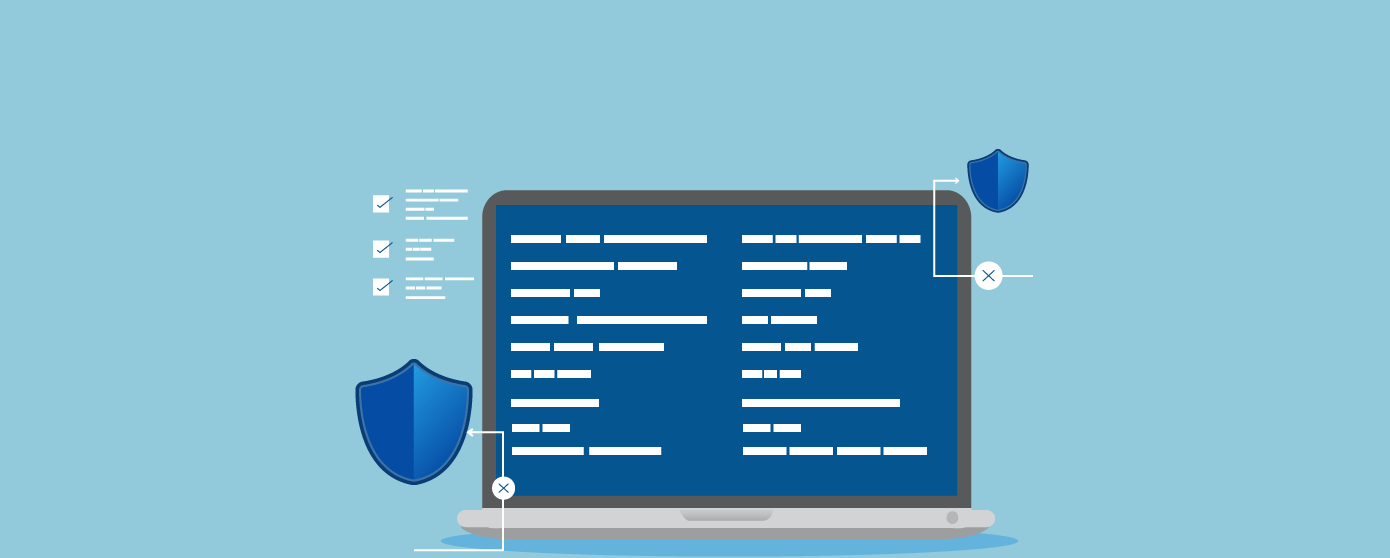
According to Verizon 2020 Data Breach Investigation Report (DBIR), 43% of cyber breaches were traced back to web application attacks, a two-fold increase from the previous year. The hackers leverage unpatched vulnerabilities to their advantage. Now, you may think that how is this possible when your security team already ran vulnerability scans? Well, there are two possibilities in such a scenario. Your security team either failed to assess for all vulnerabilities or did not run web application security penetration testing.
Before we take you through the why and how of website security penetration testing, let’s first take a look at the most common web application threats.
The attackers use this attack to execute malicious SQL statements that control database server in the backend of the web application. It may give them unauthorized access to add, edit, or modify your database.
If your web application fails to invalidate the session cookie or ID after the session ends, then the hackers can break into this vulnerability easily.
This happens when users have access to a resource or can execute a function that they shouldn’t be able to do as per the web application access rules.
When developers overlook security configuration, attackers could tap into the systems through URLs, input fields, or form fields.
A client-side (browser) vulnerability, this occurs when the web application sends untrusted script or data to the browser without sufficient validation.
If the validation is poor, the web application redirects and forwards the users, phishing or malware pages to get unauthorized access.
If the web application has weak algorithms or invalid/expired certificates or does not use SSL certificates to protect the network traffic, it will leave the session and data exposed to attackers.
Penetration testing is a comprehensive and invasive security testing that goes beyond vulnerability assessment to ensure web application security. It also aims to help you meet regulatory compliances and develop a secure defense mechanism. It is also called ethical or white hat hacking because is a simulated security attack authorized by your company.
The benefits of penetration testing are:
Penetration testing follows specific steps:
The first step is commonly referred to as reconnaissance. The testers collect information on your organization’s web application security from all internal and external stakeholders to understand potential vulnerabilities and the target’s attack surface. This stage also defines the scope and goals of the testing.
The testers deploy a combination of automated web application penetration testing tools that are simple to use, configure and deploy. These tools can be used to conduct both static and dynamic analysis of the web application’s code.
Some of the most popular penetration testing tools for web applications preferred by testers are:
At this stage, the testers enter the target through the entry points they discovered at the time of intelligence gathering and scanning. They gain access to the system by exploiting the vulnerabilities. They perform a test case for compromised systems under each scenario.
It takes a lot of time and effort to gain access and exploit the systems. Hence, ethical hackers must have the authority to maintain their access. Or else, they will have to start the entire process from scratch, and it will also cost your organization in terms of time and money. Testers can deploy keyloggers, backdoors, and other tools that they require to maintain access to thwart potential vulnerability at a later point in time. However, the testers should be vigilant enough to clear their footprints so that attackers don’t exploit them with malicious intentions in real-life attacks.
The final stage of penetration testing comprises analyzing the results and submitting a report to the organization. This report elaborates the vulnerabilities that were exploited, steps that were taken from beginning to end of the testing, data accessed during the testing, and everything else that the organization should know about its security architecture to mitigate potential cyberattacks.
Web application security penetration testing is crucial to your cyber risk management strategy. It calls for expertise and experience. Hence, you should hire a professional and trusted security partner like Indusface which can conduct deep and intelligent penetration testing for you followed by continued support. Indusface’s Web Application Scanning (WAS) assures end-to-end web application security for your organization.
This post was last modified on January 2, 2024 17:24
Explore crucial tactics like Asset Inventory, Patch Management, Access Control & Authentication, and additional best… Read More
Delve into the data privacy questions including consent protocols, data minimization strategies, user rights management,… Read More
Secure Node.js APIs using best practices: Employ proper HTTP methods, robust authentication, and API-specific security… Read More